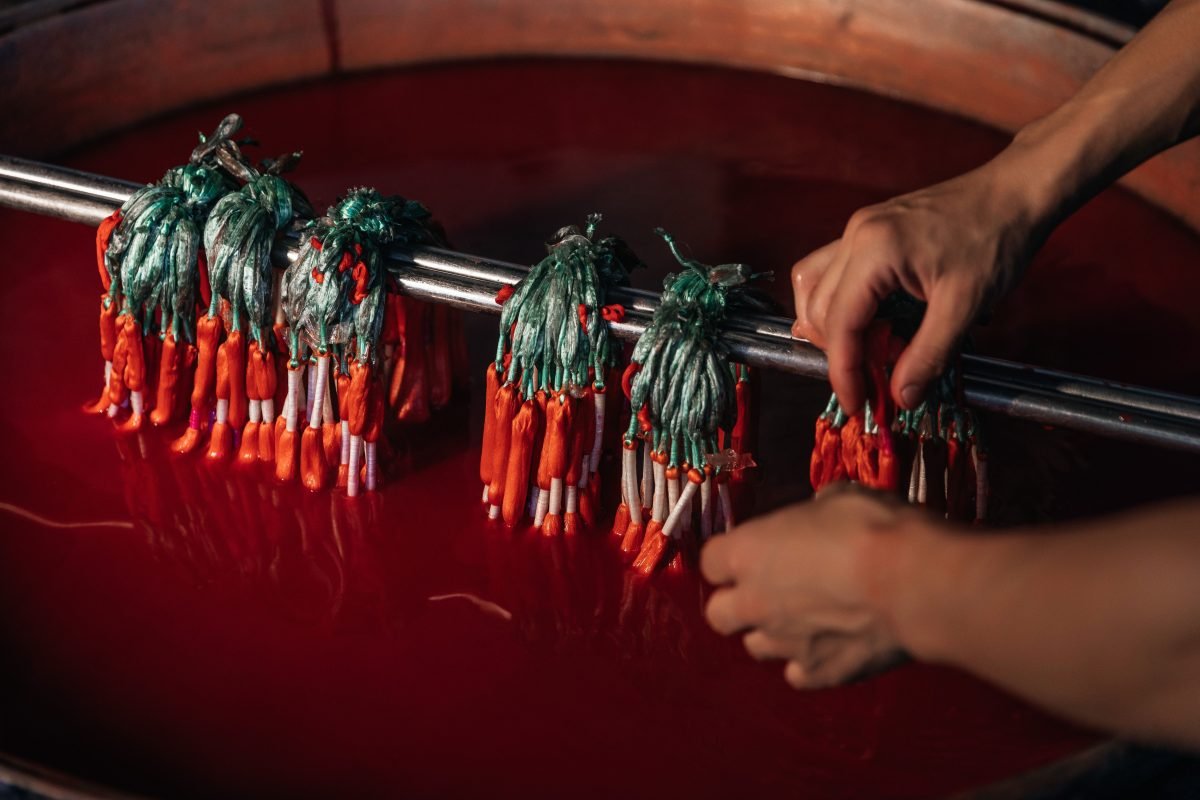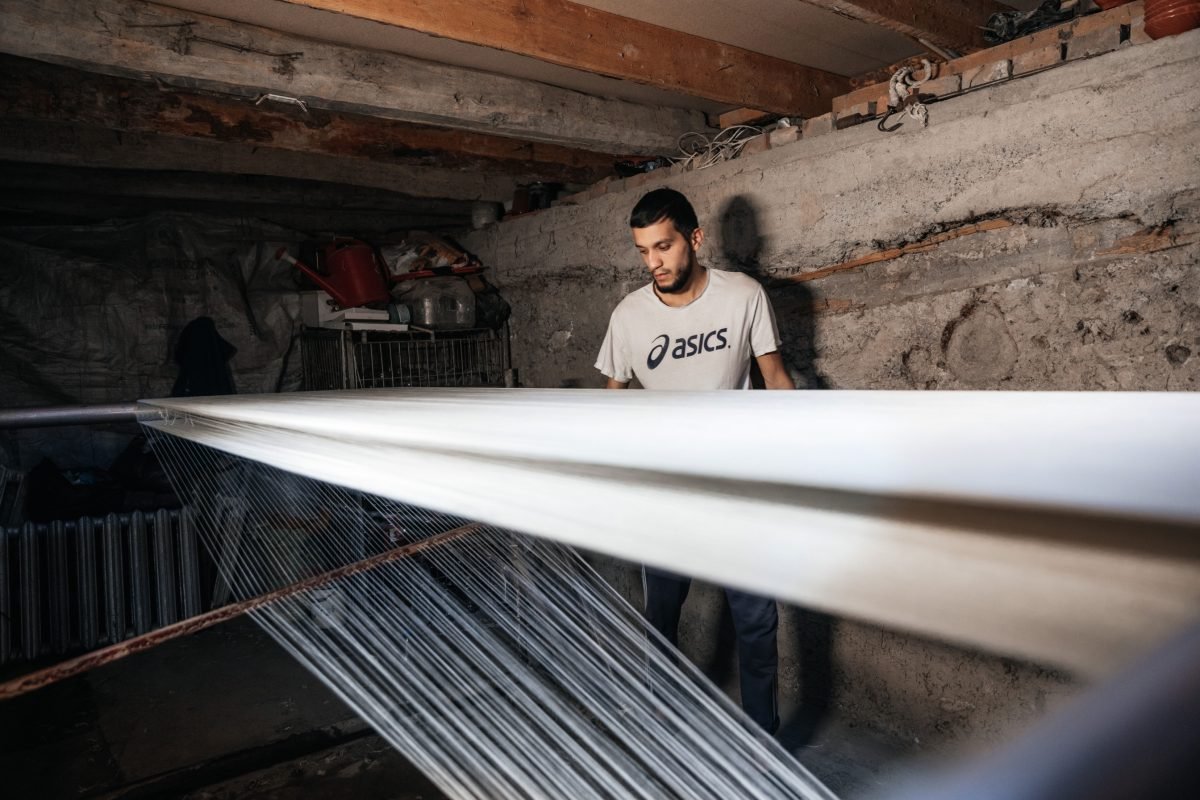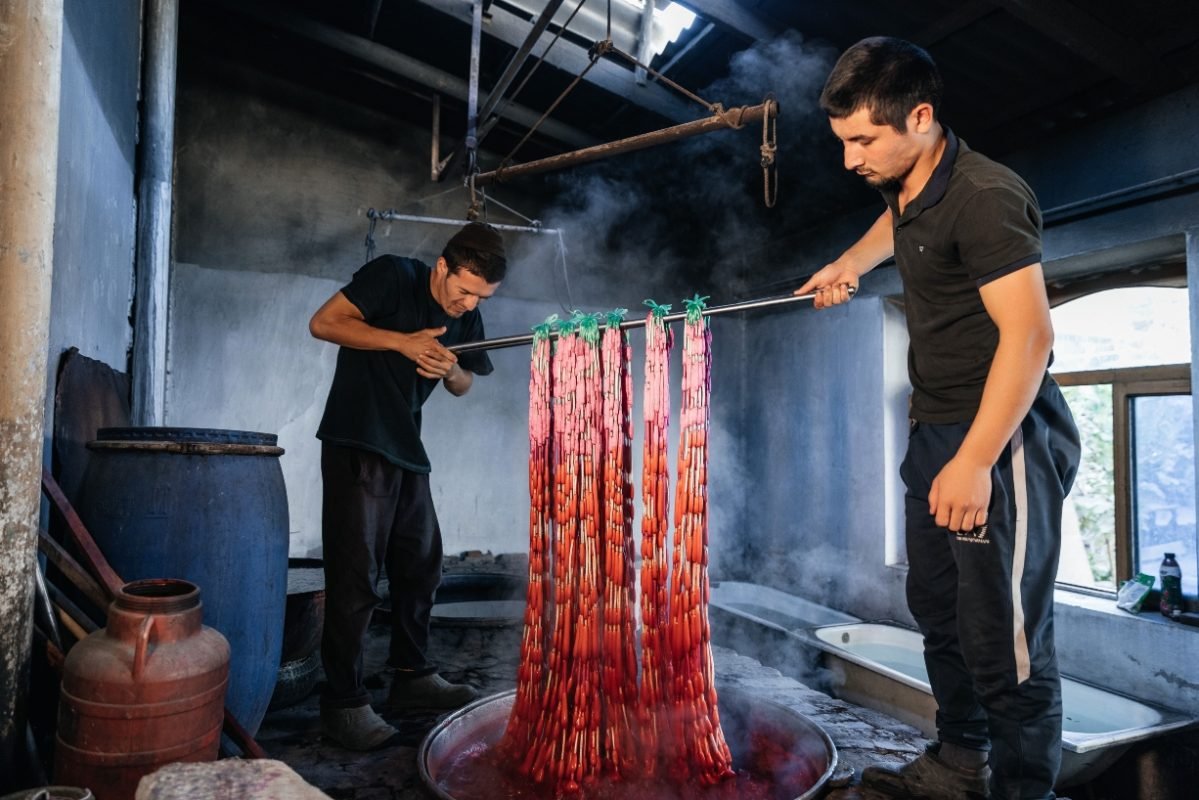Single Ikat or Double Ikat: Decoding the Timeless Elegance of These Exquisite Weaving Techniques
From the intricately woven patterns of Ikat textiles, it’s easy to understand why this centuries-old weaving technique continues to captivate artists, fashion enthusiasts, and even your auntie Sue who just started her first weaving class. The play of vibrant colours and unique designs gives each Ikat piece its distinct character, making them a favourite material for anything from fashion accessories to home decor. But did you know that there are two types of Ikat – Single and Double? Yeah, buckle up, folks, because today we’re diving into the rich and colourful world of Ikat weaving.
Unravelling the Mystique of Ikat Weaving
Ikat is more than just a beautiful fabric; it is an intricate dance of threads, a tapestry of culture, history, and artistry intertwined. Each Ikat fabric piece is a testament to a weaver’s skill, painstakingly dyed and woven by hand to create vibrant patterns that are literally ‘in the threads’.

The Origins and Cultural Significance of Ikat
Ikat weaving is as diverse as the cultures that embraced it, with different regions adding their unique spin to this age-old craft.
Uzbek Ikat
Known as “abrbandi”, Uzbek Ikat is distinguished by its bold and flamboyant patterns that truly embody the vibrant spirit of Central Asian art. The technique was mastered by the Uzbeks during the 19th century and soon became a significant part of their cultural identity.

Indonesian Ikat
Across the oceans, in the Indonesian archipelago, Ikat takes on a more spiritual meaning. In Indonesia, Ikat, known locally as “Tenun Ikat”, is deeply interwoven with community rituals and ceremonies. The complexity and design of an Ikat pattern can even denote the wearer’s social status or role within the community.
Indian Ikat
In India, Ikat, locally known as “Bandha”, is a celebrated art form, especially in the states of Andhra Pradesh, Gujarat, and Odisha. The Patola sarees of Gujarat, made using the double Ikat technique, are highly prized and can take up to a year to complete!
Single Ikat: A Tapestry of Simple Elegance
The simplest form of Ikat, Single Ikat, involves the resist-dyeing process on either the warp or weft threads before they are woven together. It’s like a warm-up exercise for weavers before they delve into the challenging world of Double Ikat.
Production Process of Single Ikat
The production process of Single Ikat is like preparing a lasagna. You layer ingredients (in this
case, dyeing the threads), bake them together (weave the fabric), and voila, you have a textile masterpiece.

First, the threads (either warp or weft) are tightly bound and then resist-dyed in chosen colours. Once the dyed threads dry, they are set up on the loom for weaving. The undyed threads are then woven with the dyed ones, creating a textile that has patterns on one side of the fabric.
Regional Variations of Single Ikat
Not all Single Ikats are created equal. Different regions lend their unique aesthetic to Single Ikat designs.
In India, the state of Gujarat is renowned for its Patola sarees made using the single Ikat technique, while in Indonesia, the islands of Bali and Sumba produce some of the most intricate Single Ikat patterns.
Double Ikat: A Symphony of Intricate Weaving
Double Ikat is the grandmaster of Ikat weaving. It involves resist-dyeing both the warp and weft threads before weaving. It’s a technique that requires extreme precision and skill, akin to playing a symphony on a violin while riding a unicycle.
Production Process of Double Ikat
The process of creating Double Ikat is an intricate dance of precision. Both the warp and weft threads are resist-dyed to create the desired pattern. These threads are then woven together in such a way that the dyed patterns align perfectly. The end results? A magnificent textile where the design appears identically on both sides of the fabric.
Regional Variations of Double Ikat
While Double Ikat is practised in various regions worldwide, few have mastered it like the weavers of Bali, Indonesia, and Gujarat, India.
The Balinese Double Ikat, known as ‘Geringsing’, is considered sacred and is often used in rituals. Meanwhile, the Patan Patola of Gujarat is a marvel of precision and patience, revered for its intricate designs and vibrant colours.
Comparing Single and Double Ikat
Complexity and Skill
When it comes to complexity, Double Ikat takes the cake (and probably the whole bakery!). Unlike Single Ikat, where only one set of threads is dyed, Double Ikat requires both sets of threads to be resist-dyed and then aligned perfectly during weaving.

Aesthetic Differences
While Single Ikat tends to have blurred or softened designs due to the dye bleeding during the weaving process, Double Ikat designs are more precise and appear the same on both sides of the fabric.
The Impact of Ikat on Modern Fashion
Ikat’s timeless elegance has not been lost in the modern fashion world. International designers and brands like Oscar de la Renta, Ralph Lauren, and Dries Van Noten have incorporated Ikat designs into their collections, bringing this ancient art to the global stage.
Caring for Your Ikat Textiles
Ikat textiles are not just fabrics, they are heirlooms. Proper care includes gentle handwashing, avoiding direct sunlight when drying, and storing in a cool, dry place to preserve their vibrant colours and delicate threads.
Conclusion
Whether it’s Single Ikat or Double Ikat, there’s no denying the charm of these exquisite weaving techniques. As we celebrate the skill, patience, and artistry behind every Ikat piece, we also keep alive the rich cultural tapestry that it represents.
FAQs
- What is the difference between Single and Double Ikat?
- Single Ikat involves resist-dyeing either the warp or weft threads before weaving, whereas Double Ikat involves resist-dyeing both the warp and weft threads.
- Where does Ikat originate from?
- Ikat is a common weaving technique across many cultures, with notable traditions in Uzbekistan, Indonesia, and India.
- How should I care for my Ikat textiles?
- Care for your Ikat textiles by handwashing gently, drying away from direct sunlight, and storing them in a cool, dry place.

